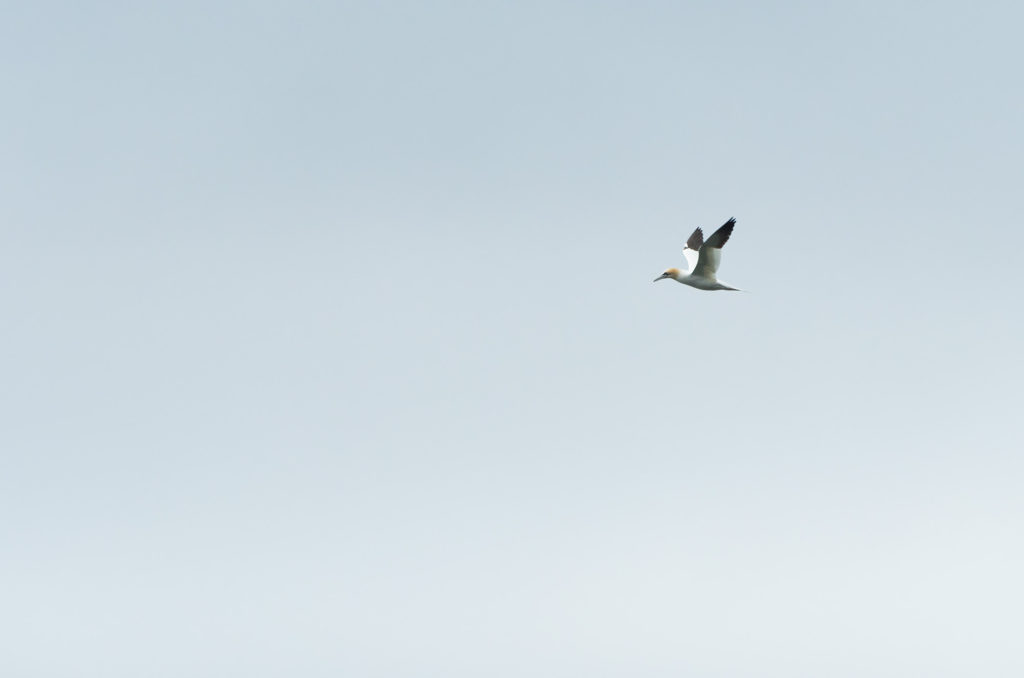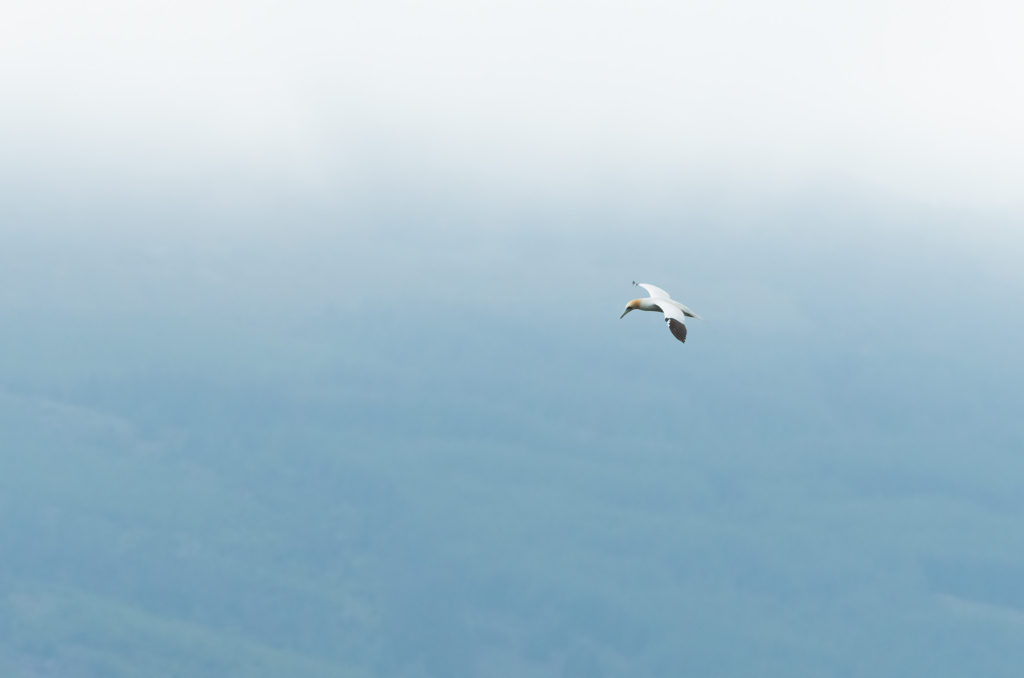I prescribe meandering. Ignore the health experts; mooching not marching is better for your health. Well, maybe not your health, but it is better for your wildlife photography. If we hadn’t slowed down our late afternoon walk along Lunderston Bay, then I would have missed some stunning wildlife – albeit in some unpredictable light.
With refreshing showers and dark clouds hotly pursued by warm sunshine and plenty of heat haze, it was a four seasons in one day kind of walk. We had great views of common gulls, herring gulls and oystercatchers on the shoreline, with eider ducks and great black-backed gulls slightly further out. All lovely, but it was on our walk back to the car park when we had our best sighting by far.
If we had been walking any faster, we would have missed it completely. My partner noticed a bird had dived into the water. I assumed it was a tern until I pointed my lens in its direction and saw it emerging from the water. “Gannet, it’s a pair of bloody gannets!” I was breathless with excitement to see my favourite seabird hunting in the upper Firth of Clyde. I mean, I know they are in the Firth, but I never assumed we would see them so far up. The town of Greenock is just up the road! There have been a few good dolphin and porpoise sightings quite far up the Clyde in recent weeks, so I am guessing that the fishing is just good there right now.

Despite being some distance away, and the light often disappearing behind huge iron-grey clouds, I could not resist capturing some images of this pair of birds for the five minutes they spent flying and diving before they flew away. I decided not to crop these images too tight as the quality would have been completely lost and also because I liked the backdrop to these gannets as they swung around in the air and prepared to dive.

Gannets dive head-first into the sea at incredible speed to catch fish. Plummeting from a height of around 30 metres, they can hit the water at up to 60 miles per hour. They fold their wings right back to make themselves streamlined and the impact is cushioned by networks of air-sacs between their muscles and skin.

